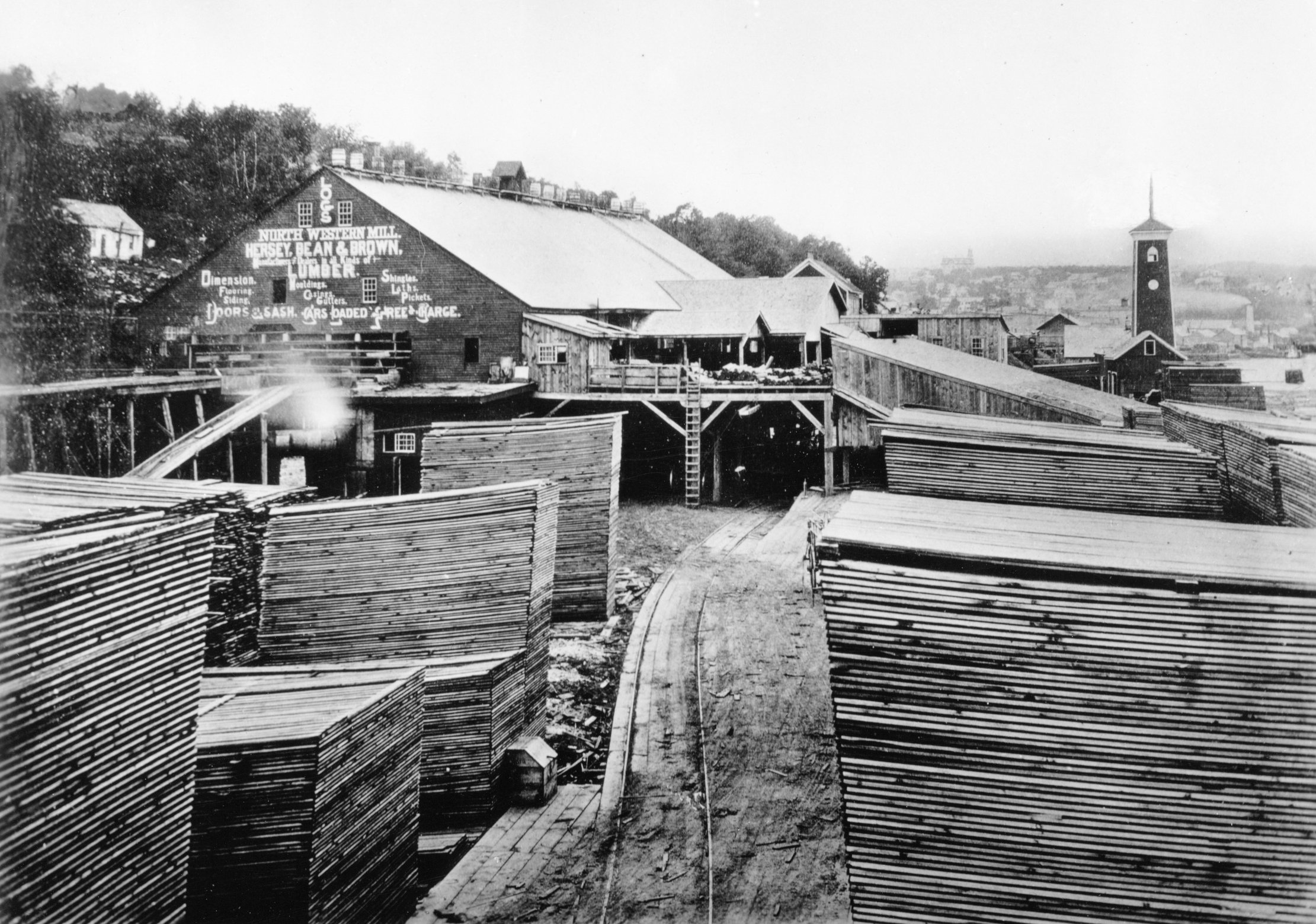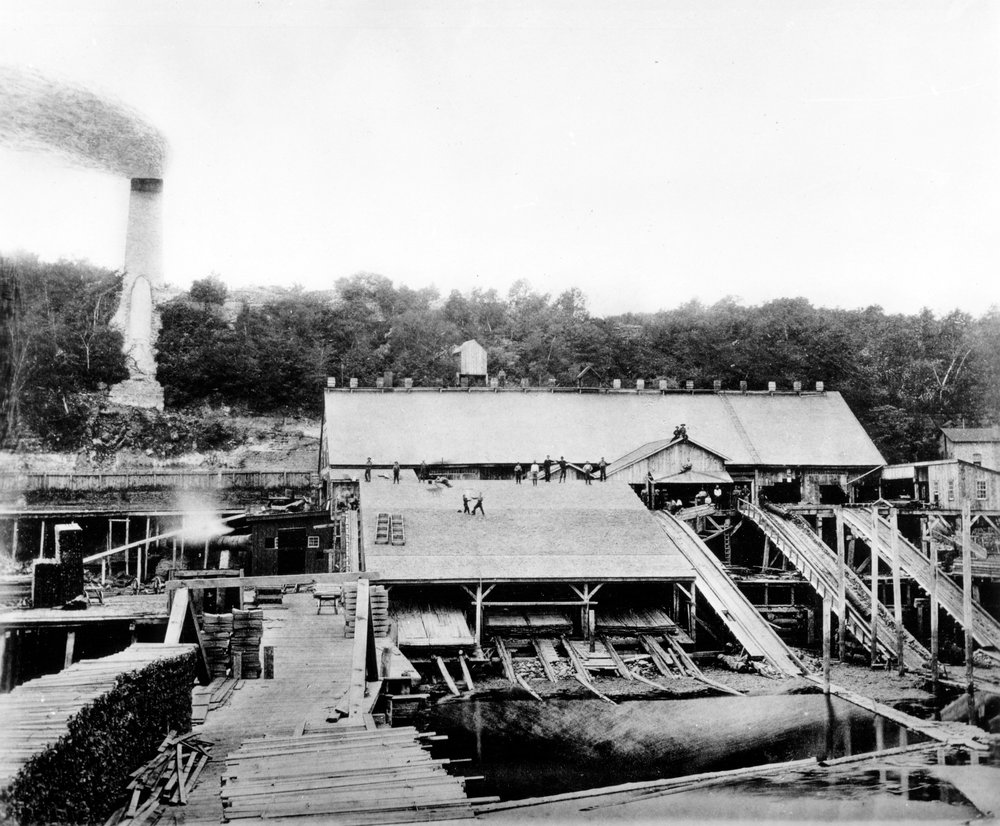Hersey, Staples & Co. Sawmill
Stillwater was developed because of the vast natural resource of timber. John McKusick and others created the first mill in Stillwater, but others soon followed. Isaac Staples is associated with the mill that now stands on North Main Street, however, Staples built his first mill on the opposite end of town.
Staples came to Stillwater in 1853 and secured pinelands. He returned to Maine and organized the Hersey, Staples and company. Staples' partners were S.F. Hersey, Dudley C. Hall, George A. Whitney, and John Brooks Fenno.
The mill was constructed on South Main Street over the winter of 1853-54, and operations began on June 1, 1854. When the mill was completed, it contained one muley saw, three sash saws, one live gang and one small circular saw. Its output was about 40,000 feet per day. The mill also contained a shingle and lath machine.
The original ownership continued until 1861, when the company became Hersey, Staples and Hall. From 1866 to 1870, the lumber company was called Hersey, Staples and Bean, the partners being Staples, Hersey, and Charles and Jacob Bean.
In May 1871, Isaac Staples sold his portion of the company, and for only one year, the company was Hersey, Bean and Company. E.S. Brown bought into the company in 1872, making the company Hersey, Bean and Brown. In 1884, Brown left the company and from then on it was known as the Hersey and Bean Lumber Company.
In 1873, Hersey, Bean and Brown built another mill just an eighth of a mile south, or down river, from the main mill. It measured 50x160 feet and contained one double rotary saw with a capacity of fifty thousand feet per day. It also contained one shingle machine that could produce thirty thousand feet a day, and a lath machine that could also do fifty thousand feet a day. There were three planing machines, three re-sawing machines and one edger, with all the necessary trimmers included.
Together, the two mills became known as the "Northwestern Mills."
The smoke stack, which with all of its connections, measured 367 feet in length. A portion of the smokestack still stands above the bluff. There was also a large cistern on the bluff, containing water that could be "thrown on the mill on a moment's notice” in case of a fire.
The Stillwater Daily Sun in December 1883 published an article titled “Our Saw Mills.” In it, the paper provided an overview on how much lumber was cut in the mills during the season. The Hersey, Bean & Brown mill started the season late as they were installing a new $12,000 engine that made the mill operate steadier and with greater regularity. In the end the mill cut over 27 million feet of lumber and its payroll for the season was $60,000. The total amount cut for the area's mills in 1883 was 112.6 million feet of lumber, with more than 50 million shingles cut.
In 1884, Hersey & Bean hired a new bookkeeper named George H. Atwood. Several years later, in 1891, Atwood leased the mill from Hersey & Bean, and eventually purchased it. Atwood, in 1894, was the first lumberman in the St. Croix Valley to haul in timber by rail. He later purchase the Schulenberg-Boeckeler mill on the north end of Stillwater. The Hersey & Bean mill became known as Atwood's A mill, the other became Atwood's B mill.
The mill that Isaac Staples and others built in 1854 stopped operation in 1904, was sold to a wrecking company in June 1906, and demolished. Atwood’s B mill burned in 1907 and was not rebuilt.
— Brent Peterson
Brent Peterson is the Executive Director of the Washington County Historical Society


